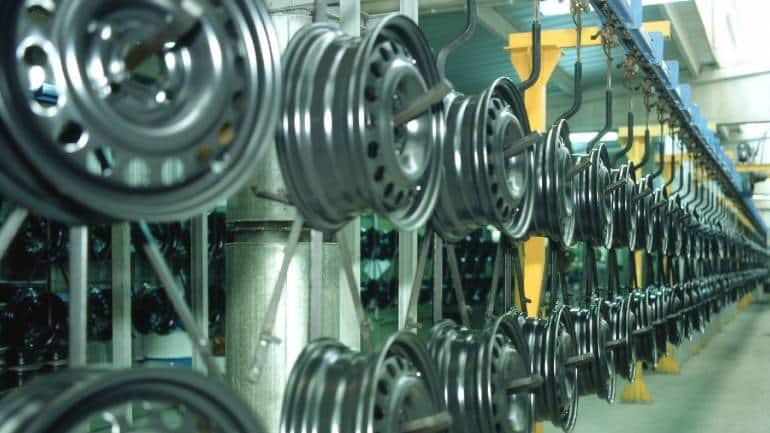- Arvind's Newsletter
- Posts
- Arvind's Newsletter-Weekend edition
Arvind's Newsletter-Weekend edition
Issue No #825
1.India's industrial growth falls to 3.7% in June (from 5.3% in May)
but direct tax collections rises to ₹6.53 lakh crore till Aug 10, 15.73% more than last year.
At 3.7 percent, the latest industrial growth figure as per the Index of Industrial Production (IIP) is at a three-month low. It is also below the consensus estimate of 5 percent.
2.Bill Gates sits down with Sal Khan, the founder of Khan Academy, for the second episode of his new podcast, Unconfuse Me with Bill Gates, to discuss the future of AI and education. It is an engaging discussion.
Sal Khan is a true pioneer of harnessing the power of technology to help kids learn. So, when Gates wanted to learn more about how artificial intelligence will transform education, he knew he had to talk to the founder of Khan Academy. He chatted with Sal about why tutoring is so important, how his new service Khanmigo is making the most of ChatGPT, and how we can keep teachers at the centre of the classroom in the age of AI.
3.Ancestry tests are “genetic astrology.”
Are you related to Charlemagne? Congratulations, so is just about everyone else who has European ancestry. How so? Because, at some point in the (not-too-distant) past, all of our family trees crisscross. We’re all related to each other. That has a biological and philosophical consequence: Our genes are neither our identity nor our destiny. We need to rethink our understanding of DNA.
4.How Loneliness Reshapes the Brain
An essay in Quanta magazine explains that loneliness can alter the brain in ways that make it harder to trust and connect with others. Lonely people tend to have more negative and biassed interpretations of social cues and less reward from social interactions
“The problem with loneliness seems to be that it biases our thinking. In behavioural studies, lonely people picked up on negative social signals, such as images of rejection, within 120 milliseconds — twice as quickly as people with satisfying relationships and in less than half the time it takes to blink. Lonely people also preferred to stand farther away from strangers, trusted others less and disliked physical touch.”
5.Can China escape deflation ? The Economist opines.
For the past two years, policymakers in most of the world’s biggest economies have faced an excruciating stagflationary dilemma. They have wrestled simultaneously with high inflation, which demands steep interest rates, and fears of a recession, which would normally call for policy easing.
The exception is China. It is now struggling with both slowing growth and dangerously low inflation: stagnation, not stagflation. New figures show that consumer prices fell by 0.3% in July, compared with a year earlier. Officials were quick to blame volatile food prices. But the deflationary pressure is more widespread. The prices charged by exporters and other producers are tumbling. A property developer’s missed bond payment on August 6th was a starkreminder of China’s ongoing housing slump. And the economy’s “nominal” growth rate (which does not strip out the effects of inflation) has dropped below its real, inflation-adjusted rate. This implies that many prices across the economy are falling.
This combination of slow growth and deflationary peril is troubling. But it is not a dilemma. The textbook response to both problems is stimulus, which should revive spending, lift growth and dispel deflation. Scylla and Charybdis are on the same side of the strait.
China’s government is seeking to put things right by cutting red tape and setting consumer-friendly regulations, but it has neglected two obvious policy instruments: interest rates and central-government spending. The central bank has cut rates by only 0.1 percentage points. Given falling inflation, the real cost of borrowing is growing. And although the finance ministry wants local governments to issue bonds, it is loth to do more itself.
The burden is falling on the most stressed part of China’s fiscal machinery—its local governments and their financing vehicles. Several unhelpful beliefs may be inhibiting the central government. First is the view that stimulus is futile. Some economists argue that firms and households will not borrow because they are already saddled with debt and fear for China’s economic future. Yet that only strengthens the case for more forceful fiscal easing, which would stabilise employment, improve the incomes of private borrowers, and thereby relieve feelings of economic insecurity. Moreover, it seems strange to argue that monetary easing cannot work before it has really been tried.
Some of China’s officials also seem to have fallen for the fallacy that you have to reflate a tyre through the puncture hole. Aware that consumer confidence is low, they have zeroed in on such things as extending amusement parks’ hours and making it easier to trade in old appliances. In fact, the best way to bolster confidence and spending is to create jobs and lift wages. And the best way to do that is macro easing, not micro fiddling.
China’s government may also believe that economic stimulus is at odds with longer-term economic reform. Xi Jinping, its leader, is understandably eager to promote “high-quality” growth—innovative, well-paid, green and resilient—rather than “low-quality” growth, such as spending on redundant infrastructure, cheap manufacturing or speculative homebuilding. China’s policymakers know that past stimulus sprees have left behind unoccupied flats and lightly used roads.
Yet reform and stimulus need not conflict. Further public investment in green infrastructure—or flood prevention—would both boost demand and help China adapt to a changing environment. Further easing of China’s hukou restrictions, which were tweaked on August 3rd but still deny some urban public services to migrants from the countryside, would let labour move more freely, and increase consumption. If policymakers do not do more to dispel deflation, China’s growth, of high or low quality, will be needlessly slow.
The Financial Times in its editorial is also urging Chinese government to take bolder initiatives. Some excerpts:
“With so many indicators flashing red, China should stop tinkering and adopt a bolder programme of reform and stimulus. The follow-up to a politburo meeting in July, which called for “stepping up countercyclical measures”, has been more rhetorical than actual. Beijing should focus on the country’s two biggest impediments. One is the fear of looming defaults by local governments that have racked up $9.3tn in debt through thousands of sometimes shadowy financing vehicles. Second is a general psychological funk that inhibits households from spending.
It should call upon state-owned financial institutions to restructure large tranches of local government debt by extending maturities and lowering interest rates. China’s deflationary pressures should assist the cause for lower rates. Such assistance should not come without a price. Local governments ought to be forced to publish accurate balance sheets of their local government financing vehicle investment portfolios, including projects that have gone bad. Without clear accounting, it will be hard to move to the next stage in local governments’ financial rehabilitation: a big sell-off of non-performing assets — with appropriate haircuts — to state and private companies.”
“The other focus must be alleviating the psychological malaise that besets many Chinese households. Big cities should be able to find ways to at least stabilise the property market; Beijing, Shenzhen and Guangzhou have already said they plan as yet unspecified measures. Cutting mortgage interest rates, downpayment ratios and various other restrictions would be a good start. If property price falls can be arrested, households will feel that their main store of wealth is no longer diminishing.”




